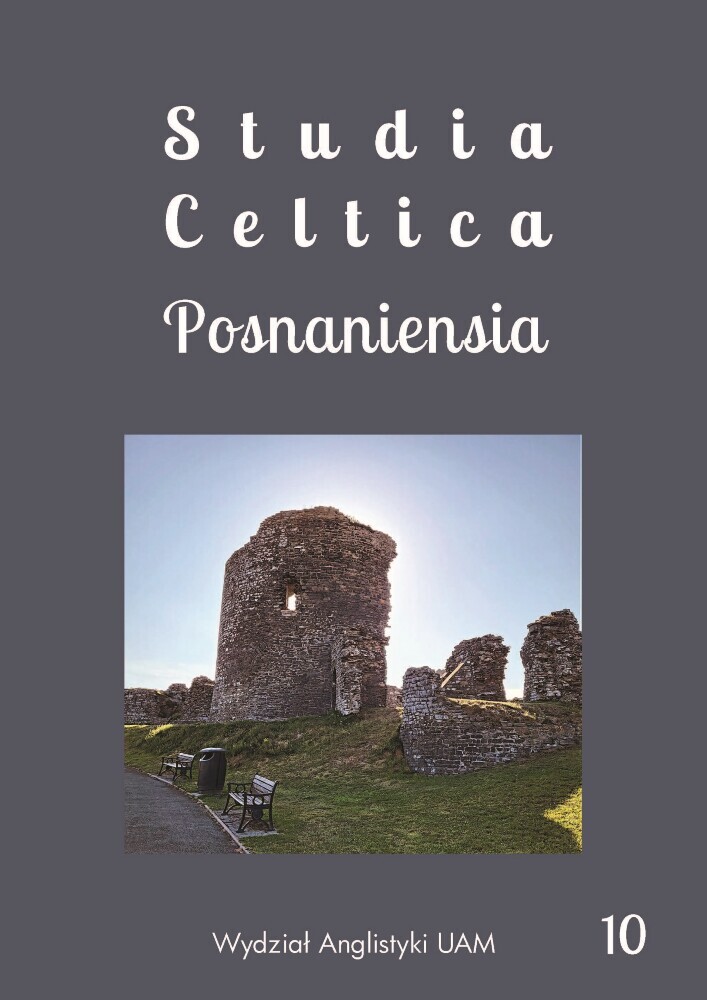Abstract
Over the past two generations, scholars of Manx have worked patiently to rehabilitate scholarly appreciation of traditional Manx as a fully valid Gaelic language; it was not merely an aberrant version of the tongues known from Ireland and Scotland, nor had it lost its integrity through anglicization. The question is now whether the Island’s extant latinity deserves an analogous reappraisal. Since the Dictionary of Medieval Latin from Celtic Sources (DMLCS) programme adopted into its corpus the Manx synodal statutes of the 13th/14th centuries, the choice of wording found therein has repeatedly turned out to be different from that selected for parallel ecclesiastical legislation elsewhere, even when the intended meaning was similar. This shows up in the semantics of specific items of vocabulary but also, most strikingly, in these texts’ readiness to use rare Latin words, including ones apparently unique to Mann. The paper applies DMLCS methods of systematic word-searching and analysis to Cheney’s definitive 1984 edition in an attempt to determine just what philological position the Statutes occupy within the spectrum of Celtic and wider medieval latinity. A parallel is then drawn with the later establishment of Manx vernacular literacy and its subsequent remarkable tenacity; a contrast is adduced with the very different fate of traditional Cornish, and an underlying reason for the difference is proposed.
References
Bracken, Damian and Eric Graff. (eds.) 2014. The Schaffhausen Adomnán, vol. 2: Commentary. Cork: ArCH Project.
Broderick, George. 1984–1986. A handbook of Late Spoken Manx, 3 vols. Tübingen: Niemeyer.
Broderick, George. (ed.) 2004. Cronica regum Mannie and Insularum: Chronicles of the kings of Man and the Isles. 3rd edition. Douglas: Manx National Heritage.
Cheney, C.R. 1984. “Manx synodal statutes, A.D. 1230(?)–1351, part I: Introduction and Latin texts”, Cambridge medieval Celtic studies 7: 63–89.
Dinneen, Patrick S. 1927. Foclóir Gaedhilge agus Béarla: An Irish-English dictionary. Dublin: Irish Texts Society.
Duffy, Seán and Harold Mytum. (eds.) 2015. A new history of the Isle of Man, vol. 3: The medieval period, 1000–1406. Liverpool: Liverpool University Press.
eDIL 2019: An electronic dictionary of the Irish language: Based on the (Contributions to a) Dictionary of the Irish language (Dublin: Royal Irish Academy, 1913–1976) (https//dil.ie 2019). Accessed on 24.03.2025.
Flahive, Joseph J. 2023. “Mediaeval French influence on Celtic-Latin vocabulary”, Archivum Latinitatis Medii Aevi (Bulletin Du Cange) 80: 101-135.
Glare, P.G.W. (ed.) 1968–1982. Oxford Latin dictionary. Oxford: Clarendon Press.
Harvey, Anthony. 2011. “Lexical influences on the medieval Latin of the Celts”, in Pérez González and Pérez Rodríguez (eds.), 65–77.
Harvey, Anthony. 2014. “Non-Classical elements (letters A to H) in the Schaffhausen Adomnán”, in Bracken and Graff (eds.), 95–102.
Harvey, Anthony. 2018. “Frankenstein in the scriptorium: Bringing Latin to life in early medieval Ireland”, in Ó Flaithearta and Nooij (eds.), 105–120.
Harvey, Anthony. 2021. How linguistics can help the historian. Dublin: Royal Irish Academy.
Harvey, Anthony. 2023. “Language and religion in Tudor Cornwall: The testimony of Sacrament an alter”, Studia Celtica Posnaniensia 8: 55–68.
Harvey, Anthony and Jane Power. 2005. The non-Classical lexicon of Celtic latinity, vol. 1: Letters A–H. Turnhout: Brepols Publishers.
Harvey, Anthony and Angela Malthouse. 2015. The non-Classical lexicon of Celtic latinity, supplement: Letters A–H. http://journals.eecs.qub.ac.uk/dmlcs/supplmnt.pdf.
Harvey, Anthony and Angela Malthouse. (eds.) 2010. Royal Irish Academy archive of Celtic-Latin literature. 2nd (developed and expanded) edition. http://clt.brepolis.net/acll.
Harvey, Anthony and Philip Durkin. 2018. Spoken through: How scholarly dictionaries mediate the past. Cambridge: Cambridge University Department of Anglo-Saxon, Norse and Celtic.
Latham, R.E., D.R. Howlett and R.K. Ashdowne. (eds.) 1975–2013. Dictionary of Medieval Latin from British sources. London and Oxford: The British Academy and Oxford University Press.
Lewin, Christopher. 2017. “‘Manx hardly deserved to live’: Perspectives on language contact and language shift”, Zeitschrift für celtische Philologie 64: 141–205.
Lewin, Christopher. 2020. “‘An English monstrosity’? Evolution and reception of Manx orthography”. Studia Celtica Posnaniensia 5: 35–59.
Lindsay, W.M. 1917. “The Philoxenus glossary”, Classical review 31: 158–163.
Ó Dónaill, Niall. 1977. Foclóir Gaeilge–Béarla. Dublin: An Gúm.
Ó Flaithearta, Mícheál and Lars B. Nooij. (eds.) 2018. Code-switching in medieval Ireland and England. Bremen: Hempen Verlag.
O’Rahilly, Thomas F. 1932 (as reprinted 1976). Irish dialects past and present. Dublin: Dublin Institute for Advanced Studies.
Pérez González, Maurilio and Estrella Pérez Rodríguez. (eds.) 2011. Influencias léxicas de otras lenguas en el latín medieval. León/Valladolid: Universidad de León/Universidad de Valladolid.
Prinz, Otto et al. (eds.) 1999. Mittellateinisches Wörterbuch, vol. II: C. Munich: Verlag C.H. Beck.
Sayers, William. 1985. “Gilbogus in Manx Latin: Celtic or Norse origin?”, Celtica 17: 29–32.
Sylwan, Agneta. (ed.) 2004. Petris Comestoris Scolastica historia: Liber Genesis. Turnhout: Brepols Publishers.
Thomson, Robert L. 1969. “The study of Manx Gaelic”, Proceedings of the British Academy 55: 177–210.
Thomson, R.L. 1988. “Manx-Latin gilbogus again”, Celtica 20: 141–144.
Woolf, Alex. 2015. “The early history of the diocese of Sodor”, in Duffy and Mytum (eds.), 329–348.
License
Copyright (c) 2025 Anthony Harvey

This work is licensed under a Creative Commons Attribution-NonCommercial-NoDerivatives 4.0 International License.

